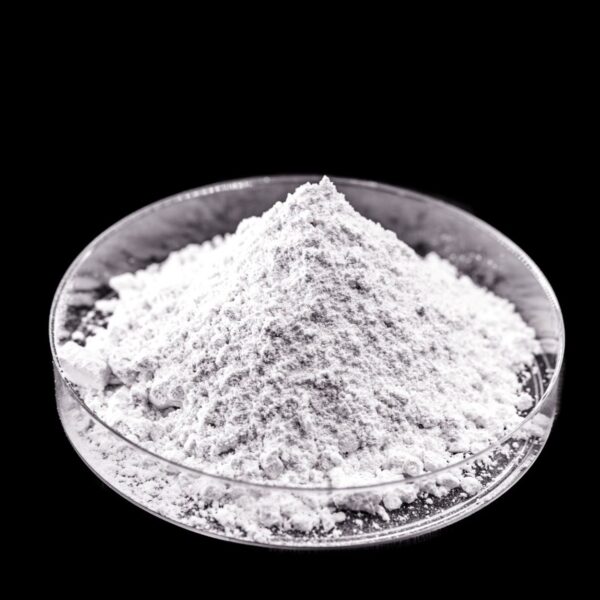Citric acid is a naturally occurring organic acid found in citrus fruits such as lemons and oranges. It is widely used in the food industry as an additive due to its various functions and benefits. It provides a tart and sour taste, enhancing the flavor of various foods and beverages. It also helps regulate the pH level of food products, ensuring the desired acidity for preservation, flavor, and texture.
Citric acid plays a vital role in human metabolism. It is involved in the Krebs cycle, also known as the citric acid cycle or tricarboxylic acid cycle, which is a series of chemical reactions that occur in the mitochondria of cells to produce energy. In this cycle, citric acid is converted into other compounds, releasing energy as ATP (adenosine triphosphate).
What is Citric Acid?
Citric acid is a weak organic acid with the chemical formula C6H5O7. It is a tricarboxylic acid with three carboxyl (-COOH) groups. When dissolved in water, it forms hydronium ions (H3O+) and citrate ions (C6H5O7–). It is a triprotic acid i.e. acid with three acidic hydrogens that react with water to produce hydronium ion. All three corresponding dissociation constants make it a weak acid.
Source: Wikipedia
How is Citric Acid Produced?
Natural Sources
Citric acid is a naturally occurring compound in various fruits and vegetables. Some of the richest natural sources of citric acid include citrus fruits like lemons, limes, oranges, and grapefruits. Other fruits such as strawberries, raspberries, pineapple, kiwi, grapes, apples, mangoes, and papaya also contain citric acid.
Additionally, cranberries and tomatoes are natural sources of citric acid. These fruits and vegetables provide a tangy flavor and contribute to various foods and beverages’ overall acidity and freshness.
The concentration of citric acid in various fruits is given in the table [1].
| Species | Citric acid (g/l) |
| Sweet Orange | 13.918 |
| Minneola | 19.858 |
| Clementine | 11.921 |
| White Grapefruit | 12.735 |
| Pomelo | 12.998 |
| Lemon | 73.936 |
| Lime | 61.497 |
| Sweetie | 6.887 |
| White grapefruit | 23.053 |
| Pink Grapefruit | 21.907 |
Microbial Production
The most common method of citric acid synthesis is the fermentation of carbohydrates by certain strains of mold or bacteria, such as Aspergillus niger. This process involves using sugar sources like molasses or corn syrup, fermented by microorganisms to produce citric acid. The fermentation process is carried out in large-scale industrial fermenters, and the resulting citric acid is then purified and used in various applications. The species that can produce citric acid are as follows [2].
| Microbes | CA producing species |
| Bacteria | Bacillus licheniformis, Arthrobacter paraffinens, Corynebacterium sp., Bacillus subtilis, Brevibacterium flavum, Corynebacterium sp., and Penicillium janthinellum |
| Fungi | Aspergillus niger, A. aculeatus, A. awamori, A. carbonarius, A. wentii, A. foetidus, Penicillium janthinelum |
| Yeast | Saccahromicopsis lipolytica, Candida tropicalis, C. Oleophila, C. Guilliermondii, C. Parapsilosis, C. Citroformans, Hansenula anamola, Yarrowia lipolytica, Torulopsis, Hansenula, Debaromyces, Torula, Pichia, Kloekera, and Zygosaccharomyces |
Use of Citric Acid in Food and Nutrition
Citric acid serves multiple crucial functions across a wide range of food products. As a natural preservative, it extends the shelf life of foods by inhibiting microbial growth. Its ability to adjust pH levels enhances flavor, imparting a desirable sour taste in beverages, confectioneries, and sauces. Citric acid also plays a significant role in maintaining the color and texture of processed foods, preventing enzymatic browning in fruits and vegetables.
Additionally, dairy and bakery products improve texture and consistency, and in meat and poultry, it acts as a pH control agent, preserving and tenderizing. Its role in balancing the overall flavor profile and improving the sensory appeal of foods, along with its preservative qualities, underscores its indispensability in the food and nutrition industries.
| Function | Details & Applications |
| Flavoring agent | Citric acid enhances the flavor of food products by providing a tangy and refreshing taste. It enhances the flavor of food products. It is commonly used in fruit-flavored beverages. |
| Acidulant & pH control agent | Citric acid regulates the pH level of food products, ensuring the desired acidity for preservation, flavor, and texture. It is commonly used in canned fruits and vegetables. |
| Coagulant | Citric acid acts as a coagulant in the acid-based coagulation process. It can be used in making cheese, paneer, and tofu. |
| Preservative | Citric acid acts as a natural preservative, inhibiting the growth of bacteria, molds, and yeasts in food products. It helps extend the shelf life of canned and processed foods. It can help to improve the shelf life of a wide range of products. |
| Chelating agent | Citric acid acts as a chelating agent, binding to metal ions and preventing their oxidation or discoloration. It is used in canned fruits and vegetables to maintain color and appearance. |
| Emulsifier | Citric acid can act as an emulsifier, helping to stabilize and blend ingredients in food products. It is commonly used in salad dressings, sauces, and mayonnaise. |
| Nutrient Enhancer | Citric acid can enhance the bioavailability of certain nutrients, such as iron and calcium, in food products. It helps improve their absorption and utilization by the body. |
Product Examples
| Type | Examples |
| Dairy | Cheese, Paneer, Yogurt |
| Savory | Pickles, Salad dressings, Mayonnaise, Marinades, Sauces, Condiments |
| Frozen desserts | Frozen desserts, Ice cream |
| Convenience | Jams, Jellies, Canned fruits and vegetables, Instant mixes |
| Non-alcoholic Beverages | Flavored beverages, Dairy-based beverages, Sports drinks, Energy drinks |
| Alcoholic Beverages | Wine & Beer |
| Snacks | Chips, Crackers, Cereal based snacks |
| Meat & Seafood | Processed meat & seafood |
| Confectionery | Hard-boiled candies, Chewing gums |
| Infant food | Infant formula, Baby foods |
| Nutraceuticals | Gummies, Tablets, Lozenges, Suspensions |
Properties of Citric Acid
| Physical Form | Crystals or powder |
| Color | Colorless |
| Odor | Odorless |
| Taste | Strongly acidic taste |
| Storage Temperature & Conditions | Ambient conditions. High humidity and elevated temperatures should be avoided to prevent caking |
| Molecular Weight | 192.12 g/mol |
| Appearance | Colorless crystals |
| pH (5 % Aqueous) | 1.86 |
| Density @ 20 °C | 1.665 g/cc |
| logP | -1.64 |
| Melting Point | 153 °C |
| Solubility | Readily soluble in water (>500 g/L at 20 °C)Soluble in acetone, alcohol, ether, ethyl acetate, DMSO |
| Claims (*Product Specific) | Natural*, Halal*, Kosher*, Plant-based*, Vegan* |
Recommended Storage and Handling
Citric acid should be stored in a cool, dry place, away from moisture and light. Handling requires standard safety measures, including gloves and eye protection, as it can irritate skin and eyes.
Typical Formulations
Processed Cheese
| Ingredient | Composition (%) |
| Parmesan cheese | 34 |
| Pizza mozzarella cheese | 14 |
| Skim milk powder | 1 |
| Cheddar | 14 |
| Milk protein | 3 |
| Buttermilk powder | 8 |
| Enzyme-modified cheese parmesan | 3 |
| Sodium citrate | 2 |
| Sorbic acid | 2 |
| Butter | 9 |
| Aged Parmesan cheese | 6 |
| Citric acid | 5 |
Source: Google Patents
Flavored Beverage Tablet
| Ingredient | Composition (%) |
| Crystalline citric acid | 49.3 |
| Mannitol | 35.0 |
| Fixed flavors | 8.1 |
| Aspartame | 3.1 |
| Cloud | 0.4 |
| Potassium bicarbonate | 3.7 |
| Color/ Vitamins/ Buffers | 0.4 |
A rapidly dissolving, sugar-free beverage tablet is made using the above formulation.
Source: Google Patents
Marmalade
| Ingredient | Composition (%) |
| Pectin | 5 % |
| Sucrose | 66 % |
| Citric acid | 1 % |
| Olive oil | 10-30% |
| Water | – |
Source: MDPI
Citric Acid Formulation Considerations
| Physical Forms | Powder, Crystals |
| Stability | Heat: When heated above 175°C, it decomposes through the loss of carbon dioxide and water. |
| Dosage | 0.5 to 2 % or more, depending on the application |
| Interaction with Other Components | Alkalis, Strong oxidizing agents |
Effect of Citric Acid on Properties of Food
| Properties | Effect |
| Sensory Properties | Taste: Citric acid has a tart and acidic taste. It is commonly described as having a sour flavor, like the taste of lemons or limes. The taste profile of citric acid adds a zesty and acidic kick to a wide range of culinary creations. Flavor Enhancement: The acidity of citric acid gives it a refreshing and tangy quality, which is why it is often used as a flavor enhancer in various food and beverage products. It balances the sweet and sour taste of sweet foods. Onset: Sudden blast of sourness. |
| Antioxidant Properties | Citric acid possesses antioxidant properties, which can neutralize free radicals in food and beverages. Free radicals can cause oxidative damage to food, leading to spoilage and degradation of quality. Citric acid also augments the activity of other antioxidants. In a study, citric acid improved the antioxidant activity of 4-Hydroxybenzyl isothiocyanate in soybean oil to prevent lipid oxidation [3]. |
| pH and stability | By acting as an antioxidant, citric acid helps to prevent or slow down this oxidation process, thereby preserving their taste and color. In a study on water chestnuts, citric acid extended the shelf life and prevented discoloration [4]. |
| Texture | Citric acid can be used as an acidulant to react with bases in leavened foods like cake to increase the volume of food and make the texture fluffy and smooth [5]. |
| Shelf life | Citric acid acts as a natural preservative by creating an acidic environment that inhibits the growth of bacteria and other microorganisms. In a study, peeled oranges’ shelf life was improved by using citric acid solution of 1 % concentration [6]. |
Hydrates of Citric Acid
Citric acid can exist in different hydrate forms, depending on the water molecules it contains. The most common hydrate form of citric acid is the monohydrate, which contains one water molecule for every citric acid molecule. The monohydrate form is a white, crystalline powder commonly used in food and beverage products. Anhydrous citric acid has no water of crystallization, whereas monohydrate citric acid has a water molecule associated with one citric acid molecule.
Safety and Regulatory Considerations
Citric acid must comply with food safety regulations, including FDA guidelines in the United States. It is generally recognized as safe (GRAS) but must be used within recommended levels.
| FDA Information | The US FDA has classified citric acid as generally recognized as safe (GRAS) for use in food. It is considered safe when used per good manufacturing practices and in the amounts necessary to achieve its intended purpose. Citric acid recovered from fruit juices or obtained via fermentation using Candida spp. Or Aspergillus niger is approved for usage [7]. |
| EU Information | In the European Union (EU), citric acid is approved for use under the EU Regulation (EC) No 1333/2008 on food additives. Citric acid is listed as additive number E330 [8]. |
Health Effects of Citric Acid
- Reduction of oxidative stress: Citric acid in a diet can increase the activation of the defense system and, consequently, contribute to lower oxidative stress levels [9]. Also, studies indicate that citrate decreases lipid peroxidation and downregulates inflammation [10].
- Absorption of minerals: In a study, citric acid improved iron absorption by 54% [11]. Also, the chelating action of citric acid increases the resorption of potassium and calcium [12].
Safety & Toxicity of Citric Acid
In terms of toxicity, citric acid is generally considered safe for consumption. It is metabolized and excreted by the body without accumulating in tissues.
Identification Numbers
| IUPAC Name | 2-hydroxypropane-1,2,3-tricarboxylic acid |
| CAS Number | 77-92-9 |
| EC Number | 201-069-1 |
| ELINCS Number | 201-069-1 |
| INS No. (Food Additive) | INS 330 |
| E Number | E 330 |
| JECFA Number | 218 |
| FEMA Number | 2306 |
Acceptable Limits or Maximum Usage
The acceptable daily intake (ADI) for citric acid is “not limited,” as per the JECFA [13].
The maximum usage level of Citric acid in food per the GSFA as per the Codex can be found here.
EU has set limits on the usage of citric acid in the following categories and the maximum allowed usage in certain categories [8].
| Category | Maximum limit |
| Unripen cheese, excluding products falling in category 16 | quantum satis |
| Whey cheese | quantum satis |
| Frozen fruit and vegetables | quantum satis |
| Canned or bottled fruit and vegetables | quantum satis |
| Compote excluding products covered by category 16 | quantum satis |
| Extra jam and extra jelly | quantum satis |
| Jam jellies and marmalades and similar products | quantum satis |
| Fruit or vegetable spreads | quantum satis |
| Fresh pasta | quantum satis |
| Fresh pre-cooked pasta | quantum satis |
| Unprocessed fish | quantum satis |
| Unprocessed molluscs and crustaceans | quantum satis |
| Table-top sweeteners in liquid form | quantum satis |
| Infant formula | quantum satis |
| Follow-on formulae | quantum satis |
| Other foods for young children | quantum satis |
| Beer and malt beverages | quantum satis |
| Fats and oils essentially free from water | quantum satis |
| Processed cereal-based foods and baby foods for infants | quantum satis |
| Fruit juices | 3000 mg/l |
| Fruit nectars | 5000 mg/l |
| Meat preparations | quantum satis |
| Potato gnocchi | quantum satis |
| Cocoa and chocolate products | 5000 mg/kg10000 mg/kg (milk chocolate) |
| Peeled cut and shredded fruit and vegetables | quantum satis |
Fun Facts About Citric Acid
- Interestingly, citric acid was reportedly discovered on a star. Using the Spitzer Space Telescope, astronomers found traces of citric acid molecules in the dust surrounding a young star, bringing a cosmic perspective to this earthly compound.
- Citric acid was first isolated in 1784 by the Swedish chemist Carl Wilhelm Scheele, who crystallized it from lemon juice. This began to understand its potential, although its industrial production began in the 19th century.
- In our bodies, citric acid plays a crucial role in the citric acid cycle (or Krebs cycle), a fundamental metabolic pathway that generates energy in the mitochondria of cells. It’s vital for the functioning of all aerobic organisms.
- The mass production of citric acid began with the discovery of a specific mold, Aspergillus niger, which could efficiently produce citric acid from sugar. This method, developed in the early 20th century, revolutionized its commercial availability.
- Commercial citric acid is seldom produced from citrus fruits despite its name due to cost inefficiency. Instead, it’s predominantly produced via microbial fermentation using substrates like molasses or corn starch.
- In cooking, citric acid is not just a souring agent; it also acts as an emulsifier in cheese making and a setting agent in preparing certain mozzarella and other fresh cheeses.
- Beyond food, citric acid is used in eco-friendly cleaning products because it naturally breaks down oils, fats, and protein-based dirt. It’s a popular ingredient in homemade cleaning solutions.
- Citric acid is used in medicine, particularly in effervescent tablets. It reacts with bicarbonate to create carbon dioxide, which leads to the effervescent effect in antacids and vitamin supplements.
- An environmentally friendly aspect of citric acid is its biodegradability. Unlike many chemical additives, citric acid breaks down naturally in the environment, making it a more sustainable choice for various applications.
Additional Resources
Bibliography
- ResearchGate – HPLC Organic Acid Analysis in Different Citrus Juices
- Wiley Online Library – Food Science & Nutrition Article
- ScienceDirect – Article on Food Science
- ScienceDirect – Article on Food and Bioproducts Processing
- UBC Library – Expedition Magazine Article
- ScienceDirect – Article on Food Microbiology
- FDA – CFR Title 21, Section 184.1033
- EU Food Feed Portal – Food Additive Details
- SciELO – Revista Brasileira de Zootecnia Article
- PubMed Central – Article on Food Science
- PubMed – Study on Food Additives
- PubMed Central – Article on Food Additives and Health
- WHO JECFA Database – Chemical Information









